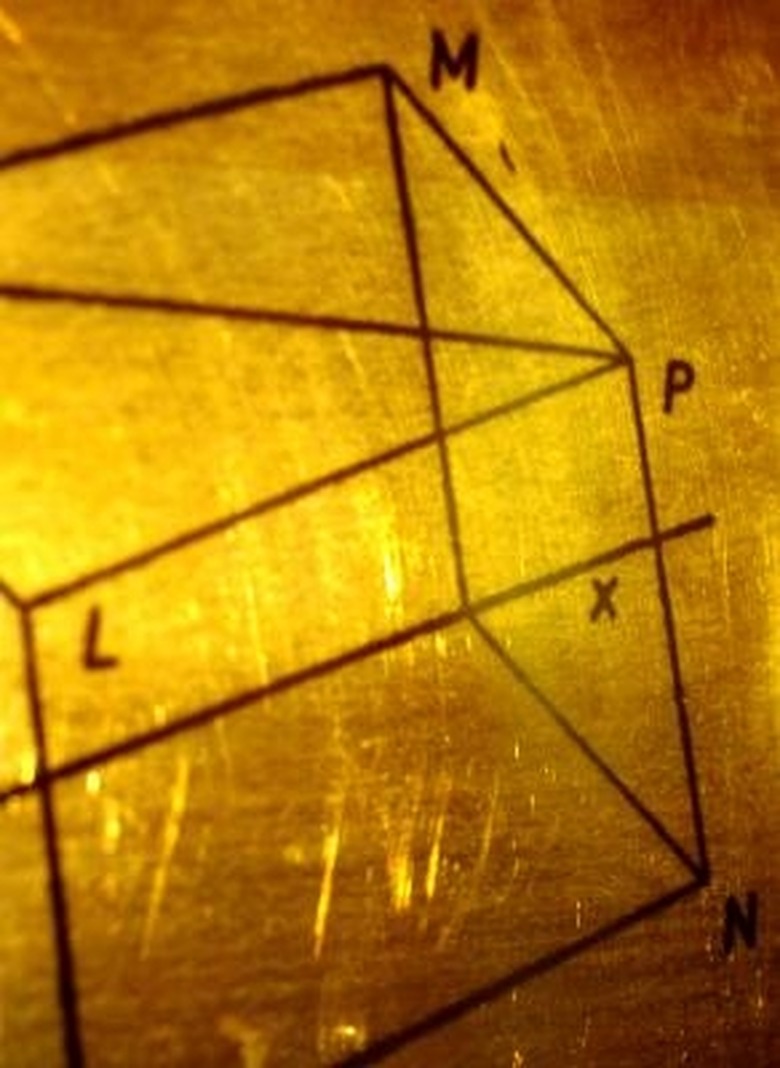How To Calculate The Surface Area Of A Prism
Picture the prism before you calculate its surface area. It has two dimensional faces with areas you could figure out using two dimensional figure area formulas. For example, a triangle prism has three rectangles for its sides, and triangles for its bases. Find the area of all three rectangles and both bases to get that prism's total surface area.
Step 1
Use length times width, (l)(w), to calculate a rectangular face on the prism. Multiply the result by the number of faces your prism has. This is all you'd have to do if you're asked to calculate prism lateral area. Lateral area is the prism's sides.
Step 2
Look at the prism base. Use the formula for a triangle's area if you're working with a triangular prism. Triangle area is (1/2)(b)(h) where "b" is base and "h" is height. Use a square's area formula, square one of the sides, if you're calculating total base surface area for a square prism.
Step 3
Multiply Step 2's result by two if your prism has two bases. Skip this step if your prism only has one base. Take your results for the total surface area of your prism's sides. Add that result to the total prism base surface area. This gives you the total prism surface area.
TL;DR (Too Long; Didn't Read)
A prism is named after its base's shape. If it has triangle bases, it's a triangular prism. When you see a question asking for triangular prism surface area, know that you're required to figure out a triangle's area as part of the solution.
Cite This Article
MLA
Contributor, . "How To Calculate The Surface Area Of A Prism" sciencing.com, https://www.sciencing.com/calculate-surface-area-prism-2082666/. 24 April 2017.
APA
Contributor, . (2017, April 24). How To Calculate The Surface Area Of A Prism. sciencing.com. Retrieved from https://www.sciencing.com/calculate-surface-area-prism-2082666/
Chicago
Contributor, . How To Calculate The Surface Area Of A Prism last modified March 24, 2022. https://www.sciencing.com/calculate-surface-area-prism-2082666/
